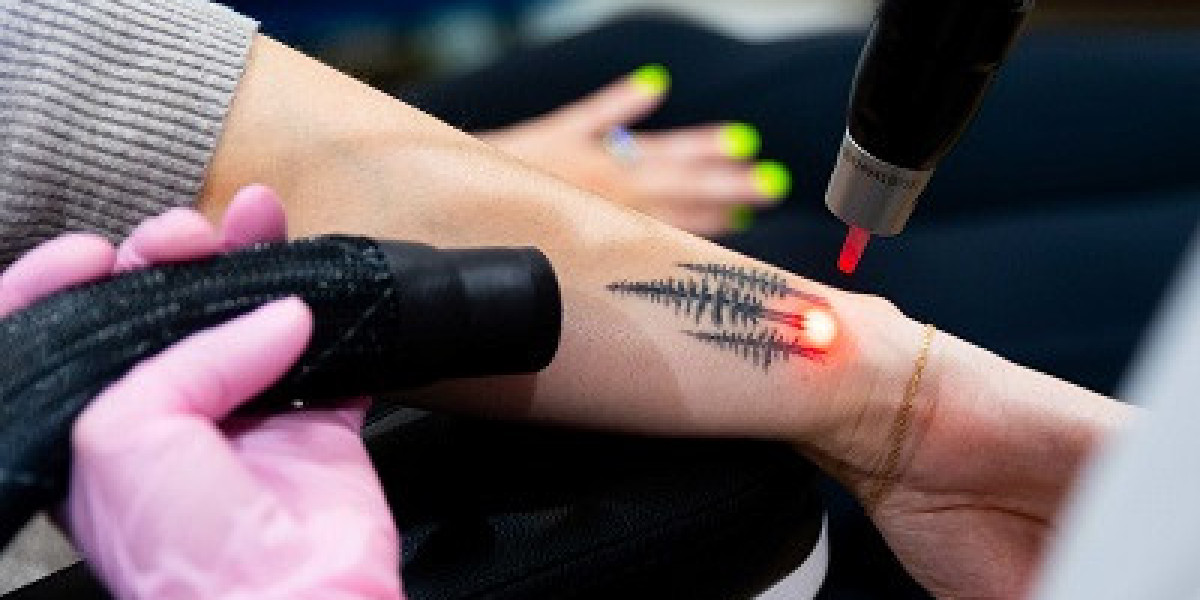Introduction
Tattoos have become a popular form of self-expression, with millions of people sporting various designs on their bodies. However, as preferences change and life circumstances evolve, many individuals find themselves regretting their tattoos. This has led to a significant rise in the demand for tattoo removal services. Among the various methods available, laser tattoo removal has emerged as the most effective and widely used technique. Understanding the science behind this process and knowing how to choose the Best Laser Tattoo Removal Clinic Oman is crucial for anyone considering tattoo removal. This article delves into the mechanisms of laser tattoo removal, its advantages and limitations, and the factors to consider when selecting a clinic.
The Mechanism of Laser Tattoo Removal
Laser tattoo removal involves the use of concentrated light beams to break down tattoo pigments in the skin. Here’s how it works:
1. Understanding Tattoo Ink and Skin Structure
Tattoo ink is composed of various pigments that are injected into the dermis, the second layer of skin. The dermis is more stable than the epidermis, which is the outer layer of skin, making it a better location for long-lasting tattoos. The ink particles are large and can remain in the skin for years, causing the tattoo to be permanent.
2. The Role of Lasers
Lasers used for tattoo removal emit specific wavelengths of light that target different colors of tattoo ink. Commonly used lasers include:
Q-Switched Lasers: These are the most effective for tattoo removal. They deliver energy in short bursts, which helps to break down the ink particles without damaging surrounding skin tissue.
Picosecond Lasers: These newer lasers offer even shorter pulse durations, leading to faster and more effective results, particularly for stubborn colors.
3. The Removal Process
During a laser treatment session, the laser penetrates the skin and targets the tattoo ink. The energy from the laser is absorbed by the ink particles, causing them to heat up and fragment into smaller pieces. The body’s immune system then gradually eliminates these smaller particles over time.
4. Sessions Required for Complete Removal
Most tattoos require multiple sessions for complete removal, as the body can only process a limited amount of ink at a time. The number of sessions needed depends on several factors, including the tattoo's size, color, and depth, as well as the individual's skin type and healing response.
Advantages of Laser Tattoo Removal
Laser tattoo removal offers several advantages over other methods, such as surgical excision or chemical removal:
- Precision: Lasers can precisely target ink without harming surrounding skin.
- Less Pain and Recovery Time: Patients typically experience less pain and shorter recovery times compared to other methods.
- Variety of Ink Colors: Advanced lasers can effectively treat various ink colors, including difficult shades like green and blue.
- Minimal Scarring: When performed by skilled professionals, the risk of scarring is significantly reduced.
Limitations of Laser Tattoo Removal
While laser tattoo removal is effective, it has its limitations:
- Complete Removal Not Guaranteed: Some tattoos may not be fully removable, especially if they are particularly dark or densely pigmented.
- Potential Side Effects: Patients may experience side effects such as swelling, blistering, or changes in skin pigmentation.
- Cost: The total cost of laser tattoo removal can add up, as multiple sessions are often necessary.
Choosing the Right Clinic
Selecting the right clinic for laser tattoo removal is crucial to achieving the best results. Here are several factors to consider:
1. Qualifications and Experience of Practitioners
Ensure that the clinic is staffed by qualified professionals with experience in laser tattoo removal. Look for practitioners who are licensed and certified in dermatology or cosmetic procedures.
2. Technology Used
Inquire about the types of lasers the clinic uses. Advanced equipment, such as Q-switched or picosecond lasers, typically provides better results than older technologies.
3. Consultation Process
A reputable clinic will offer an initial consultation to assess your tattoo and discuss your goals. This is an opportunity to ask questions about the process, potential risks, and expected outcomes.
4. Patient Reviews and Before-After Photos
Researching patient reviews and viewing before-and-after photos can give you insight into the clinic’s track record and the quality of their work.
5. Safety and Hygiene Standards
The clinic should adhere to strict safety and hygiene protocols. This includes using sterile equipment and maintaining a clean environment to minimize the risk of infection.
Conclusion
Laser tattoo removal is a sophisticated procedure grounded in scientific principles, offering a safe and effective means of eliminating unwanted tattoos. As the demand for tattoo removal continues to grow, understanding the intricacies of the process and making informed choices about where to receive treatment is paramount. By carefully considering factors such as practitioner qualifications, technology, and clinic reputation, individuals can increase their chances of achieving satisfactory results. Ultimately, whether for personal, professional, or aesthetic reasons, the journey to tattoo removal should be approached with knowledge and care, ensuring a positive outcome for all involved.






